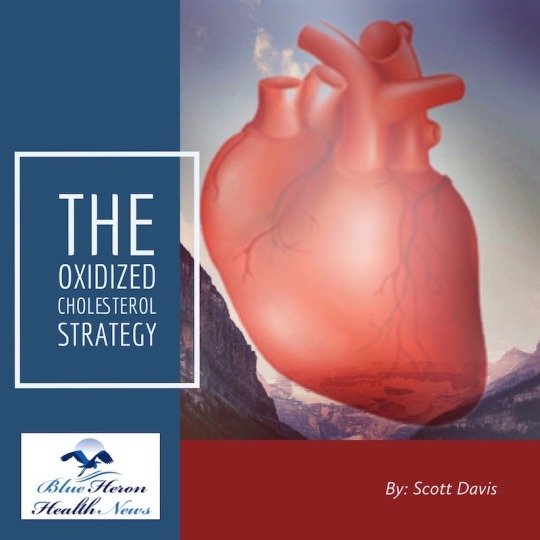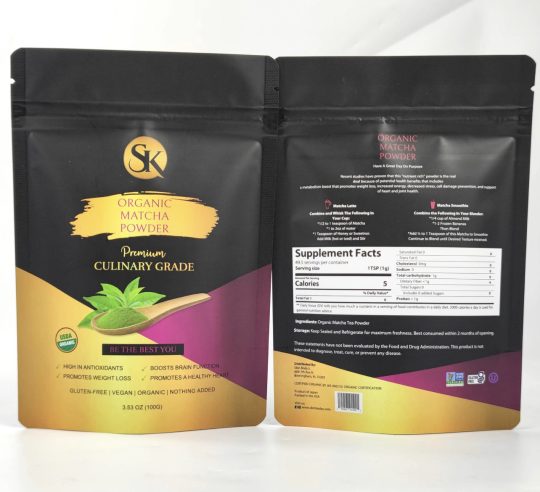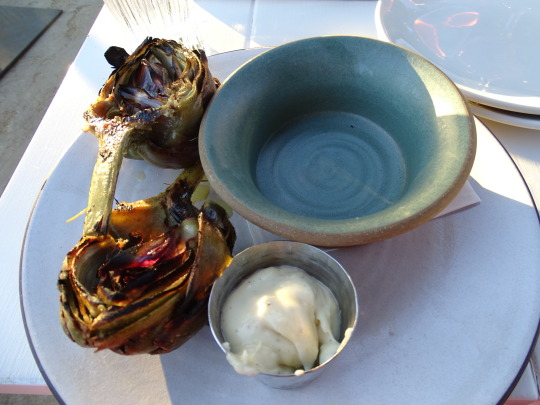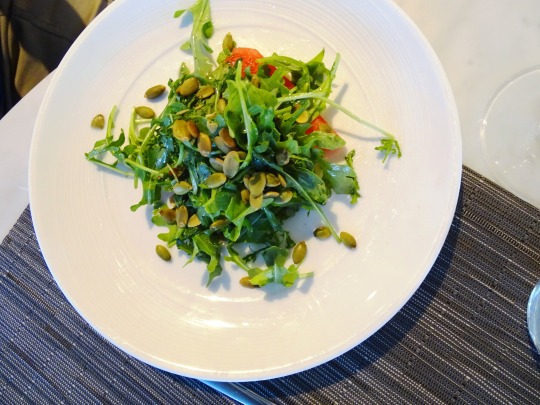#Lifestyle Changes To Improve Your Cholesterol
Explore tagged Tumblr posts
Text
Top Ten Lifestyle Changes to Improve Your Cholesterol

Cholesterol plays a vital role in your body, but too much of it can harm your heart. High levels of cholesterol can lead to serious health issues like atherosclerosis, heart attacks, and strokes. Fortunately, you can manage your cholesterol levels through some effective lifestyle changes. Let's dive into the top ten lifestyle changes you can make to improve your cholesterol and boost your heart health.
1. Include Soluble Fiber in Your Diet
Soluble fiber absorbs water and forms a gel-like consistency during digestion, helping to remove cholesterol from your body. Start your day with a bowl of oatmeal topped with apples or berries, keep fresh fruits like oranges and apples for snacks, and add beans to your meals.
2. Adopt a Heart-Friendly Diet
Support your heart by eating fresh fruits, vegetables, whole grains, and nuts, which provide healthy fats. Avoid oily and processed foods, focusing on whole, fresh ingredients to help lower cholesterol levels.
3. Avoid Trans-Fats
Trans-fats increase bad cholesterol and the risk of heart disease. Commonly found in processed foods like frozen pizza and cookies, it's essential to read food labels and avoid products with hydrogenated oils.
4. Lose Weight
Excess weight can increase cholesterol levels and the risk of heart disease. Losing just 10% of your weight can significantly lower bad cholesterol. Plan balanced meals, incorporate physical activity, and replace sugary drinks with water or herbal teas.
5. Exercise Regularly
Regular exercise lowers bad cholesterol and increases good cholesterol. Start with brisk walking and progress to high-intensity workouts and weight training. Mix up your workouts to keep them interesting and consider joining a fitness class or sports team.
6. Quit Smoking
Smoking damages arteries and increases the risk of heart disease. Quitting smoking can significantly improve cholesterol levels and overall heart health. Seek support from friends, family, or professional programs.
7. Limit Alcohol Intake
While moderate alcohol consumption can be heart-healthy, excessive drinking can harm your heart. Limit your intake to one glass per day or avoid it altogether. Replace alcoholic beverages with non-alcoholic options like sparkling water or herbal teas.
8. Take Care of Your Gut Health
A healthy gut influences cholesterol levels. Focus on eating whole, fresh foods and include fermented foods and probiotics to support a healthy gut microbiome. Reduce your intake of sugary foods and beverages.
9. Add Spices to Your Food
Spices like coriander, black pepper, ginger, and garlic help maintain healthy cholesterol levels. Use a variety of spices in your daily cooking to add flavor and health benefits.
10. Manage Stress
Stress can raise cholesterol levels. Practice stress management techniques like deep breathing, meditation, and mindfulness. Dedicate time each day to relaxation practices and engage in hobbies that help you unwind.
Bottom Line
Managing your cholesterol levels is crucial for your heart health. By incorporating these lifestyle changes, you can significantly improve your cholesterol levels and overall well-being. However, if lifestyle changes alone aren't enough, it's best to consult a doctor for further guidance.
At Yuvaap, we believe in empowering individuals to take control of their health and well-being. Our comprehensive approach to wellness integrates physical, emotional, and social dimensions of health, offering personalized guidance and support. Visit Yuvaap.com to discover more about how you can improve your cholesterol and enhance your overall health. Embrace the journey to better health with Yuvaap and take control of your well-being today!
#cholesterol#Foods That Lower Bad Cholesterol#How To Improve Your Cholesterol#Lifestyle Changes To Improve Your Cholesterol
0 notes
Text
HEALTH AND FITNESS
If we want to live happy lives, we must take care of our health and fitness. They have many benefits for keeping fit. We now eat out more regularly because of how our way of life has changed.
Importance of Health and fitness:
Although home-cooked meals are healthier. Because of the places we must travel to for work, we cannot always depend on them. Therefore, fitness is essential because it improves our ability to work without difficulty. They increase our fight against germs that cause illness. Maintaining our fitness improves our ability to work and shares to our happiness. Hence, diet has a significant impact on our good health. By containing good health,

Role of Fitness:
we can face illnesses like the common cold, viral fever, and other similar conditions. Running, dancing, and jogging are all useful forms of exercise. A person cannot have an unhealthy body if they have an unhealthy mind. Fitness and good physical and mental health enable us to succeed in life and fully enjoy it.
We feel more physically and mentally strong and confident when our bodies and minds are both in good health. Moreover, we must take good care of ourselves by engaging in regular exercise. To make up for our lack of a healthy diet. Hence, people frequently skip meals because they believe that eating less will aid in weight loss.
To maintain your fitness, start by eating a balanced diet.
All of the essential nutrients-
Carbohydrates: They are molecules having different chains of sugar molecules. Carbohydrates are the main function of providing energy in our body.
Fats: They protect organs and provide energy. They help to control cholesterol and blood pressure.
Protein: They help to repair and build your body tissue. Protein also transports and stores nutrients.
Vitamins: They are essential nutrients that are present in the food we eat. Vitamins are important to our body because they support immunity and maintain bone health.
Minerals: They are substances that come from the earth and cannot be by living organisms.
Water: They deliver nutrients to cells. Water regulates our body temperature.
Role of Discipline in Health and Fitness:
Therefore, a balanced diet keeps us healthy and supports our immunity, which wards off disease. Our physical and mental well-being must both be maintained. People who are unable to communicate their feelings experience mental instability and suppressed depression. Hence, a breakdown or a panic attack, both of which are harmful to our health, may result from these rank
The idea of health and fitness in my life:
Work out for an hour each day.
Try to maintain a healthy diet.
Try to stay away from food.
Go for 20 to 30 minutes of daily walking.
Conclusion:
In conclusion, maintaining a healthy lifestyle requires fitness. A healthy individual will be less prone to illness and perform tasks more effectively. In the short term, exercise helps to control discipline and improve your sleep. Hence, In the long term, it reduces the risk of heart disease and many cancers.
2 notes
·
View notes
Text














World Heart Day
Heart Day is part of an international campaign to spread awareness about heart disease and stroke prevention. This is the perfect day to quit smoking, get exercising and start eating healthy – all in the name of keeping your ticker in good working order, and improving the health and well being of people the world over.
Learn about World Heart Day
The World Heart Federation have found that heart disease and strokes are the world’s leading cause of death, killing 17.1 million people every year – that’s more than victims of cancer, HIV and AIDS and malaria.
Overeating, lack of exercise, unhealthy diets and high blood pressure, cholesterol and glucose levels are all factors which can trigger heart disease and threaten our own lives, and those of loved ones. Heart Day was set up to drive home the message that heart problems can be prevented.
History of World Heart Day
The aim is to improve health globally by encouraging people to make lifestyle changes and promoting education internationally about ways to be good to your heart. This lesson is becoming increasingly relevant as reports of obesity, poor diet and physical inactivity in children and young people become more and more common.
Events take place to promote healthy hearts. Charities and other organisations coordinate walks and runs, health checks, public talks, shows and exhibitions to name a few of the interesting and informative events which mark the day. So on Heart Day, get involved, eat your fruit and veg and get outside; both you and your heart will feel the benefits.
World Heart Day is celebrated every year. It was created by the World Heart Federation. The first World Heart Day took place back in 2000. Since then, in 2012, leaders from around the globe committed to the reduction of worldwide mortality from non-communicable diseases by 25 percent by 2025.
Did you know that almost half of the NCD deaths happen because of cardiovascular disease? This makes it the biggest killer across the world. Therefore, World Heart Day is the perfect platform for the community to come together in the battle against cardiovascular disease and lower the worldwide disease burden.
How to observe World Heart Day
As World Heart Day is all about drawing people’s attention to heart diseases and illnesses, as well as the range of health issues that are associated with this, it makes sense to raise awareness and also improve your own understanding. We would recommend taking some time to do a bit of research about heart conditions and risk factors. You can then use your online platforms and your social groups in order to raise awareness.
There are both non-governmental and governmental organizations that take part in this date around the world. They do this through the organization of science fairs, exhibitions, fitness sessions, public talks, walks, and marathons. Some famous buildings, monuments, and landmarks opt to go red on this date so that they can show their support for cardiovascular disease awareness.
If you are opting to celebrate this day, it is important to try and be more attentive to your own heart health. There are a number of different ways that you can do this. This includes following a healthy diet, quitting alcohol, stopping smoking, and getting involved in physical exercises. It is also important to have your cholesterol, blood pressure, and heart checked on a regular basis.
It is a good idea to take a look online to see if there are any events that are going on in your local area. If there are not, how about organizing an event yourself? All you need is an idea that is going to get the community involved and raise awareness for heart disease. This could be anything from a fun run to a community fair. It is up to you.
You don’t need to do an event on such a big scale either. You could gather your friends and family members and host a fun event, educating them on the issues and asking them to make a donation. Other ways to fundraise include making crafts and then donating the proceeds to a heart foundation or charity.
There are a lot of different charities and organizations that are doing great work when it comes to raising awareness and finding cures for different heart problems. We are sure that they would appreciate a donation, whether this is a donation of your time, money, or both! After all, anything that you can do can make a difference to someone’s life, so do not underestimate the role that you can play.
Source
#Davie Village#Vancouver#Forever in my Heart by James Cable#Alamosa#Napa#Paradise#Heartfullness Vegas by Katy Boynton#Take Heart by Patricia Vader#World Heart Day#WorldHeartDay#29 September#public art#sculpture#USA#Canada#travel#original photography#Distillery Historic District#Toronto#summer 2015#2019#vacation#cityscape#architecture#Glenn Gould Gathering by Ruth Abernethy#Sacred Heart of Jesus#Trois-Rivières#Hotel Château Gütsch#Luzern#Lucerne
2 notes
·
View notes
Text
BHARAT MORINGA

Title: Unveiling the Green Marvel: Moringa's Impact on Overall Health and Wellness
Introduction: In the quest for a healthier lifestyle, individuals are increasingly turning to nature's bountiful offerings to meet their nutritional needs. One such powerhouse of nutrients that has gained prominence in recent times is Moringa oleifera, often referred to as the "drumstick tree" or simply "Moringa." This remarkable plant has been celebrated for its exceptional nutritional content and numerous health benefits. In this blog post, we delve into the myriad ways in which Moringa contributes to the overall development of health.
Rich Nutrient Profile: Moringa is a nutritional powerhouse, boasting a diverse array of essential vitamins and minerals. It is a rich source of vitamin C, vitamin A, calcium, potassium, and iron, among others. These nutrients play crucial roles in supporting the immune system, maintaining bone health, and promoting overall vitality.
Antioxidant Properties: The leaves of the Moringa tree are loaded with antioxidants, such as quercetin, chlorogenic acid, and beta-carotene. These antioxidants help combat oxidative stress in the body, which is linked to various chronic diseases and aging. By neutralizing free radicals, Moringa aids in protecting cells from damage and supports overall well-being.
Anti-Inflammatory Benefits: Chronic inflammation is a root cause of many health issues, including heart disease and arthritis. Moringa possesses anti-inflammatory properties that can help reduce inflammation and alleviate associated symptoms. Regular consumption of Moringa may contribute to a lower risk of inflammatory conditions.
Blood Sugar Regulation: Research suggests that Moringa may help regulate blood sugar levels, making it a valuable ally for individuals with diabetes or those at risk of developing the condition. The plant compounds in Moringa have demonstrated potential in improving insulin sensitivity, contributing to better blood sugar control.
Cholesterol Management: Maintaining healthy cholesterol levels is crucial for cardiovascular health. Studies have indicated that Moringa may have a positive impact on lipid profiles, helping to lower bad cholesterol levels while promoting the increase of good cholesterol. This dual action supports heart health and reduces the risk of cardiovascular diseases.
Nutritional Support for Malnutrition: Moringa is an excellent source of nutrition, especially in regions where malnutrition is prevalent. The plant's leaves are a cost-effective and sustainable solution to supplement diets with essential nutrients, addressing nutritional gaps and promoting healthy growth, particularly in children.
Enhanced Energy and Vitality: The combination of vitamins, minerals, and antioxidants in Moringa contributes to increased energy levels and overall vitality. Regular consumption may help combat fatigue, boost stamina, and promote a general sense of well-being.
Conclusion: Incorporating Moringa into your diet can be a simple yet impactful step towards enhancing your overall health and well-being. Whether in the form of Moringa tea, powder, capsules, or fresh leaves, this versatile plant has much to offer. However, as with any dietary supplement, it's essential to consult with a healthcare professional before making significant changes to your diet, especially if you have existing health conditions or are on medication. Embrace the green marvel that is Moringa and unlock its potential for a healthier, more vibrant life.
Certainly! Here are some hashtags you can use to amplify the reach of your blog post on Moringa's health benefits:

#moringa#MoringaHealth#Superfood#NutrientRich#WellnessJourney#HealthyLiving#PlantBased#AntioxidantBoost#NaturalHealth#HeartHealth#InflammationFree#ImmuneSupport#CholesterolControl#EnergyBoost#HolisticHealth#NutritionMatters#MalnutritionSolution#VitalityFromNature#GreenNutrition#HealthyChoice#WellnessWednesday
7 notes
·
View notes
Text
The Oxidized Cholesterol Strategy: A Deep Dive into Reversing Heart Disease

Hey there, Tumblr fam!
Today, I want to share a revolutionary program that's changing the game for heart disease: The Oxidized Cholesterol Strategy. This isn't your average cholesterol-lowering approach; it tackles the root cause of heart problems: oxidized cholesterol.
What's the big deal about oxidized cholesterol?
Unlike regular LDL (bad cholesterol), oxidized cholesterol is the real villain in plaque buildup, leading to heart attacks and strokes. This program goes beyond just lowering numbers; it focuses on reducing oxidized cholesterol and promoting its removal from your body.
So, how does it work?
The Oxidized Cholesterol Strategy rests on four pillars:
Diet: Ditch those oxidized fat sources like vegetable oils and processed foods. Embrace healthy fats like olive oil, butter, and coconut oil instead.
Lifestyle: Get moving! Regular exercise, stress management, and good sleep are key to optimizing cholesterol and boosting your heart health.
Monitoring: Track your progress with cholesterol level monitoring and plaque buildup assessments. This allows for personalized adjustments and ensures you're on the right track.
Holistic Approach: It's not just about cholesterol. This program promotes healthy blood pressure, blood sugar, and weight management for long-term well-being.
Science-backed and success-driven!
This isn't just talk; the Oxidized Cholesterol Strategy is backed by extensive scientific research. And the results speak for themselves! People are experiencing:
Complete reversal of plaque buildup
Drastic reductions in cholesterol levels
Increased energy and mental clarity
Enhanced appearance and overall well-being
Ready to take control of your heart health?
The Oxidized Cholesterol Strategy offers a compelling and effective way to reverse heart disease and improve your overall health. Check out their website for more information and start your journey towards a healthier future!
#OxidizedCholesterol #HeartHealth #Cholesterol #Reversal #SuccessStories #HolisticHealth #Wellbeing
#oxidized cholesterol#heart disease#cholesterol#reversal#success stories#holistic health#wellbeing#diet#lifestyle#science#health#fitness#nutrition#motivation#inspiration#healthy living#wellness journey#chronic illness#heart disease awareness#natural health#alternative medicine#functional medicine#integrative medicine#plant-based diet#clean eating#exercise motivation#stress management#sleep hygiene#blood pressure#blood sugar
4 notes
·
View notes
Text
Is it possible to achieve weight loss by following an unrestricted diet and a sporadic exercise regimen?

No, you cannot lose weight by eating whatever you want and only exercising once every few days, when you have time. This is because weight loss is determined by the balance between your calorie intake and your calorie expenditure.
If you eat more calories than you burn, you will gain weight. If you eat fewer calories than you burn, you will lose weight. And if you eat the same amount of calories as you burn, you will maintain your weight.
To lose weight, you need to create a calorie deficit, which means burning more calories than you consume. This can be achieved by either reducing your calorie intake or increasing your physical activity, or preferably both.
According to the Dietary Guidelines for Americans, to lose 0.7 kilograms a week, you need to reduce your daily calories by 500 to 750 calories.
Eating whatever you want means that you are not paying attention to the quality and quantity of your food. Some foods are high in calories, fat, sugar and salt, which can contribute to weight gain and health problems. Eating a balanced diet that includes a variety of fruits, vegetables, whole grains, lean protein and healthy fats can help you lower your calorie intake and provide essential nutrients for your body.
Exercising once every few days, when you have time, means that you are not consistent with your physical activity. Physical activity is important for weight loss because it helps you burn more calories and build lean mass. It also has many other benefits for your health, such as lowering blood pressure and cholesterol, preventing or reversing the effects of certain diseases, improving mood and mental health, and enhancing your quality of life.
The U.S. Department of Health and Human Services recommends that healthy adults get at least 150 minutes of moderate aerobic activity or 75 minutes of vigorous aerobic activity a week, or a combination of both. They also suggest doing strength training exercises for all major muscle groups at least two times a week.
Therefore, if you want to lose weight, you need to adopt healthy eating and exercise habits that suit your lifestyle and preferences. You may not like the words diet and exercise, but they are the key to successful weight loss. You can start by making small changes in your daily routine, such as choosing water instead of soda, adding more vegetables to your plate, taking the stairs instead of the elevator, or walking for 10 minutes during your lunch break. These changes can add up over time and help you achieve your weight loss goals.
11 notes
·
View notes
Text
They found this drug can melt away plaque in the circulatory system.
Artery drug 'feasible' in humans after mice tests
The drug Trodusquemine was given to mice on a high fat diet in 2017 and was shown to "melt away" the fat inside arteries that can cause heart attacks and strokes. Follow-up tests carried out this year on human white blood cells found the same success.Dec 21, 2023
https://www.bbc.com › news › articles
Artery drug "feasible" in humans after Aberdeen mice research - BBC
Here are some foods that will help with plaque in the body.
What drink opens up arteries?
Pomegranate juice also has nitrate, which can widen blood vessels and facilitate blood flow.
https://cfvein.com › blog › blood-ci...
What Are The Best Drinks For Blood Circulation? | CF Vein
How to reverse 20 years of arterial plaque naturally?
There is no fast way to unclog arteries once plaque has built up. The best evidence for stabilizing and regressing plaque is with a combination of cholesterol-lowering medications, such as statins along with healthy lifestyle habits.
https://www.healthline.com › health
Can You Unclog and Reduce Plaque in Arteries? - Healthline
What will dissolve plaque in arteries?
There is no easy way to unclog an artery once plaque has built up. However, dietary choices, exercise, and avoiding smoking can improve cardiovascular health and stop blockages from worsening. In some cases, medication or surgery may be necessary.
https://www.medicalnewstoday.com › ...
How to unclog arteries: Treatment and preventing blockages
Diet
Eating certain foods, like cayenne pepper, pomegranate, onions, cinnamon, garlic, fatty fish, beets, turmeric, leafy greens, citrus fruits, tomatoes, and berries, can help increase blood flow and circulation
Yes, improving circulation can help prevent plaque buildup in arteries. Normal blood flow protects against plaque development, while disturbed blood flow can promote it. Regular exercise, which can improve circulation, can also help reduce plaque buildup in other ways: Lowers bad cholesterol, Boosts good cholesterol, Increases nitric oxide production, and Strengthens the heart.
MedicalNewsToday
How to unclog arteries: Treatment and preventing blockages
In addition to eating a healthful diet, regularly exercising or getting enough physical activity may help a person to maintain a moderate weight and reduce their risk of heart problems. Taking part in cardiovascular exercise, otherwise known as cardio, on a regular basis may also help strengthen the heart and reduce plaque. Simple cardio activities that raise the heart rate include: jogging. cycling. running. brisk walking. swimming. playing tennis. doing aerobics. It is best for a person to aim for at least 150 minutes of moderate-intensity physical activity and two days of strength training per week.
NCBI
Restoration of normal blood flow in atherosclerotic arteries ... - NCBI
Blood flow is a key regulator of atherosclerosis. Disturbed blood flow promotes atherosclerotic plaque development, whereas normal blood flow protects against plaque development. We hypothesized that normal blood flow is also therapeutic, if it were able to be restored within atherosclerotic arteries. Apolipoprotein E-deficient (ApoE−/−) mice were initially instrumented with a blood flow-modifying cuff to induce plaque development and then five weeks later the cuff was removed to allow restoration of normal blood flow.
NYU Langone Health
Lifestyle Changes for Lower Extremity Arterial Disease
Exercising Regularly. Regular exercise improves the health of your arteries in several ways. First, it lowers bad cholesterol and boosts good cholesterol, which can reduce plaque buildup in arteries. It also increases the production of nitric oxide, a molecule that helps dilate the arteries and improve blood pressure in the cells that line the arteries, enhancing circulation. Exercise helps control the symptoms of diabetes, high blood pressure, and even stress, which can worsen high blood pressure—one of the leading causes, along with plaque buildup, of lower extremity arterial disease.
Some other ways to improve circulation include:
Cardiovascular exercise
Activities like jogging, cycling, running, brisk walking, swimming, playing tennis, and aerobics can help raise your heart rate and improve circulation.
Stretching
Stretching before and after exercise can help boost circulation.
Hydration
Drinking enough water throughout the day can increase oxygen levels in your blood, which can lead to better circulation. Experts recommend drinking 8–12 glasses of water per day.
Diet
Eating certain foods, like cayenne pepper, pomegranate, onions, cinnamon, garlic, fatty fish, beets, turmeric, leafy greens, citrus fruits, tomatoes, and berries, can help increase blood flow and circulation.
Quitting smoking
Smoking can inhibit blood flow, damage blood vessel walls, and cause plaque to build up in veins.
Henry Ford Health
https://www.henryford.com › blog
How To Boost Your Circulation (And Why It's Important!)
Oct 27, 2020 — Try any of the below: Increase cardiovascular exercise. Running, biking or walking can help boost circulation—and the same goes for stretching ...
Web results
smilehavendentalcenter.com
https://www.smilehavendentalcenter.com › ...
General Blood Flow / Circulation - SmileHaven Dental Center
Exercise whenever you can to boost your circulation. · Stretch Make sure to get up every hour to stretch your body or exercise for 3-5 minutes. · Massage · Elevate ...
National Institutes of Health (NIH) (.gov)
https://www.ncbi.nlm.nih.gov › pmc
Restoration of normal blood flow in atherosclerotic arteries ... - NCBI
by MA Schake · 2023 · Cited by 1 — Decuffing to restore normal blood flow promotes increased stability of plaques in the unstable (upstream) plaque region comparable to treatment with ...
Now also using massage to boost blood flow.
thegoodbody.com
https://www.thegoodbody.com › ty...
19 Different Types of Massage: Which Is Best ...
Massage therapy is when a therapist manipulates your soft tissues and muscles, by rubbing and kneading, to evoke a healing or relaxation response. However the t
What type of massage is the strongest?
Deep tissue massage
Deep tissue massage
Deep tissue massage uses more pressure than Swedish massage. This is a good choice for people with chronic muscle problems such as soreness, injury or imbalance. Deep tissue massage helps relieve muscle tension, chronic muscle pain and anxiety.
https://www.vinmec.com › news › 1...
12 Types of Massage: Which is Right for You? - Vinmec
Indigo Spa
https://indigospa.co.za › Blog
20 Most Common Types of Massages and their Benefits ...
Nov 26, 2021 — The term refers to kneading, rubbing, soothing or working in and out. Lomi Lomi massage includes using the Palms Knuckles elbows, fingers, feet, ..
So the Swedish massage boosts blood flow and lumpatic flow most. This will help you deal with plaque in the body. Plus before the athletes do performance, they should have a massage.
A Swedish massage improves circulation of both blood and lymph flow. Friction created between skin and fingers encourages an improved in circulation. Improving circulation of blood and lymph flow promotes heathier, stronger muscles that are less likely to fatigue and weaken during any type of activity.
https://www.physio.co.uk › treatments
Improved Circulation - Benefits Of Massage - Physio.co.uk
So when giving the Swedish massage, they should use peppermint oil. The further enhanced improvement of circulation.
Peppermint oil
Peppermint: Minty and refreshing, Peppermint oil is known to improve circulation efficiently when topically applied with a carrier oil such as Fractionated Coconut oil.Feb 22, 2022
https://www.edensgarden.com › w...
Which Essential Oils Improve Circulation and Blood Flow?- AAA
Taking a combination of the below supplements before a massage can further stimulate circulation and help the massages defeat plaque buildup.
What is the best supplement to increase circulation?
1. B-complex. Vitamin B12 and folic acid are important for your blood flow because of how they manage homocysteine levels.Aug 16, 2023
https://www.takecareof.com › articles
Top 17 Vitamins and Supplements for Blood Flow | Care/of
Substances such as capsaicin, beetroot powder, and Omega-3 fatty acids may help dilate blood vessels and reduce inflammation.
https://www.medicalnewstoday.com › ...
Can vitamins help increase blood flow? - MedicalNewsToday
If you want a faster acting, take the liquid form.
What is the best supplement to increase circulation?
1. B-complex. Vitamin B12 and folic acid are important for your blood flow because of how they manage homocysteine levels.Aug 16, 2023

https://www.takecareof.com › articles
Top 17 Vitamins and Supplements for Blood Flow | Care/of
Substances such as capsaicin, beetroot powder, and Omega-3 fatty acids may help dilate blood vessels and reduce inflammation.

https://www.medicalnewstoday.com › ...
Can vitamins help increase blood flow? - MedicalNewsToday
So before massage, besides the supplements above you can drink this combination of teas mix the 3 of these 1/3 of each.
Green and black teas are packed with antioxidants that help protect the body from free radicals, which can lead to heart disease. Additionally, ginger tea has been found to improve blood flow as a natural vasodilator, widening blood vessels and enhancing blood flow.
https://cfvein.com › Blog
What Are The Best Drinks For Blood Circulation? | CF Vein
Dynamic stretching increases blood flow the most. They recommend the downward dogs.
Dynamic StretchingDynamic stretches improve circulation and flexibility using movement. These include exercises such as: Walking downward facing dog: To perform a walking downward facing dog, place palms on the floor and walk feet backward approximately two to three feet. Hips press up and chest presses toward legs.Jul 20, 2021
https://drmotionsocks.com › blogs
Stretches To Increase Circulation | Dr. Motion Blog
Here are the different forms of dynamic stretching.
There are a wide variety of dynamic stretches you can try, especially if you're looking to warm up for a run.
Leg pendulum (Swinging each leg back and forth 10 to 12 times. You can also do this swinging your leg side-to-side).
Walking lunges.
Walking lunges with a torso twist.
Small hip circles.
May 28, 2020
https://health.clevelandclinic.org › ...
Dynamic vs. Static Stretching - Cleveland Clinic Health Essentials
Taking a couple drops of a regular oil orally, each day helps with bacteria in the mouth. You could put it on a toothbrush and brush your teeth and tongue.
aestheticfamilydentistry.com
https://aestheticfamilydentistry.com › ...
Oregano oil benefits for oral health - Aesthetic Family Dentistry
Feb 16, 2018 — Used in a tiny dose a couple of times a day, oregano oil helps fight the bacteria in the mouth. Integrated into a daily oral health
Rejuvenation Health
https://www.rejuv-health.com › ho...
11 Ways to Prevent Tooth Decay Naturally
Jan 4, 2023 — Oregano Oil Oregano essential oil can help prevent infection from forming in a tooth cavity. It can also destroy harmful bacteria in your
Here are the best sexual positions for a Woman to do with a man who has a rectal dysfunction or needs to improve circulation. These work for men with heart issues. I wish Kelly would do this with me.
Traditionally, doctors concerned about blood flow during sexual intercourse have recommended a sex position with the woman on top.
https://www.everydayhealth.com › ...
Best Sexual Positions for ED Treatment - Everyday Health
Watching 2 and a 1/2 men as I put this together.

2 notes
·
View notes
Video
youtube
The Power of Exercise and Healthy Eating
Exercise and healthy eating are powerful components of a balanced and fulfilling life. They have numerous physical, mental, and emotional benefits that can significantly improve overall well-being. Here are some of the key ways in which exercise and healthy eating can positively impact your life:
Physical Benefits:
Weight Management: Regular exercise and a balanced diet can help you achieve and maintain a healthy weight. This is essential for reducing the risk of obesity-related conditions like heart disease and diabetes.
Increased Strength and Fitness: Exercise builds muscle strength, improves endurance, and enhances physical fitness, making daily activities easier to perform.
Better Cardiovascular Health: Both exercise and a healthy diet support heart health by lowering the risk of high blood pressure, high cholesterol, and heart disease.
Improved Bone Health: Weight-bearing exercises and diets rich in calcium and vitamin D contribute to strong bones, reducing the risk of osteoporosis.
Enhanced Immune System: A well-balanced diet with essential nutrients and regular exercise can bolster your immune system, reducing the likelihood of illness.
Mental Benefits:
Stress Reduction: Exercise triggers the release of endorphins, which are natural mood lifters. Healthy eating provides the necessary nutrients for optimal brain function, reducing stress.
Better Sleep: Regular physical activity can promote better sleep patterns, leading to improved mental clarity and mood.
Enhanced Cognitive Function: Exercise and a nutrient-rich diet have been linked to better cognitive function, memory, and reduced risk of cognitive decline with age.
Mental Health: Regular exercise has been shown to reduce symptoms of depression and anxiety. A diet rich in omega-3 fatty acids and antioxidants can also support mental well-being.
Emotional Benefits
Increased Self-Esteem: Achieving fitness goals through exercise and maintaining a healthy diet can boost self-esteem and body image.
Improved Confidence: Feeling physically strong and healthy can enhance overall confidence in various aspects of life.
Positive Lifestyle Habits: Engaging in regular exercise and healthy eating can lead to the development of positive lifestyle habits that benefit you in many areas of life.
Longevity and Quality of Life:
Longer Lifespan: Research has shown that individuals who exercise regularly and maintain a balanced diet tend to live longer, healthier lives.
Reduced Risk of Chronic Diseases: Exercise and a healthy diet are associated with a decreased risk of chronic diseases such as diabetes, certain cancers, and stroke.
Incorporating regular exercise and making nutritious food choices into your daily routine can have a profound and lasting impact on your physical health, mental well-being, and overall quality of life. It's important to consult with a healthcare provider or nutritionist when making significant changes to your diet or exercise routine to ensure they are appropriate for your individual needs and goals.
2 notes
·
View notes
Text
Why Women’s Wellness: Understanding High Cholesterol and Heart Disease in Women
At Access Health Care Physicians, LLC, we prioritize women's wellness and recognize the unique health challenges they may face. In this article, we delve into the critical topic of high cholesterol and heart disease in women, shedding light on the importance of understanding these conditions to promote better heart health.
Introduction:
Heart disease is a leading cause of mortality among women worldwide. While it has long been associated with men, women also face significant risks related to heart health, particularly concerning high cholesterol levels. Understanding the connection between high cholesterol and heart disease is vital for empowering women to make informed decisions about their health.
The Impact of High Cholesterol on Heart Health:
Cholesterol is a waxy, fat-like substance that our bodies need to build healthy cells. However, when cholesterol levels become elevated, it can lead to the accumulation of fatty deposits in the arteries, restricting blood flow to the heart. This condition, known as atherosclerosis, significantly increases the risk of heart disease and related complications.
Unique Risk Factors for Women:
Women may experience specific risk factors for high cholesterol and heart disease that differ from those of men. Some of these risk factors include:
Hormonal Changes: Hormonal fluctuations throughout a woman's life, such as during pregnancy, menopause, and the use of hormonal birth control, can impact cholesterol levels and heart health.
Smoking: Smoking is a prominent risk factor for heart disease in women. Female smokers face a higher risk of heart attacks and other cardiovascular issues.
Diabetes: Women with diabetes are at an increased risk of developing heart disease compared to men with diabetes.
Sedentary Lifestyle: Physical inactivity can lead to weight gain and unfavorable changes in cholesterol levels, contributing to heart disease risk.
Stress and Depression: Chronic stress and depression have been linked to higher cholesterol levels and an increased risk of heart disease in women.

Recognizing Symptoms in Women:
Women may experience different heart attack symptoms than men. While chest pain is a common symptom for both genders, women may also present with other signs, including:
Pain or discomfort in the neck, jaw, or upper back
Shortness of breath
Nausea or vomiting
Lightheadedness or fainting
Pain or discomfort in one or both arms
It is essential for women to be aware of these symptoms and seek immediate medical attention if they experience any of them.
Preventive Measures for Women's Heart Health:
Preventing heart disease begins with proactive lifestyle choices and regular health checkups. Here are some preventive measures that women can take to improve heart health:
Healthy Diet: Adopt a balanced diet rich in fruits, vegetables, whole grains, lean proteins, and healthy fats. Limit the intake of saturated and trans fats, as they can contribute to elevated cholesterol levels.
Regular Exercise: Engage in regular physical activity, such as walking, jogging, swimming, or cycling, for at least 150 minutes per week.
Manage Stress: Practice stress-reduction techniques, such as meditation, yoga, or deep breathing exercises, to promote emotional well-being.
Quit Smoking: If you smoke, seek support to quit smoking and improve your heart health significantly.
Regular Checkups: Schedule regular visits with healthcare providers for preventive screenings and cholesterol level assessments.
Conclusion:
Promoting women's wellness involves understanding the specific risks and challenges they may face concerning heart health. High cholesterol is a significant contributor to heart disease in women, but with early detection and lifestyle modifications, it can be effectively managed and even prevented.
At Access Health Care Physicians, LLC, we are committed to providing comprehensive care to women, empowering them to take charge of their health. Our team of healthcare providers offers personalized guidance and support to enhance heart health and overall well-being.
Educate yourself about heart disease and high cholesterol, make informed choices, and take proactive steps towards a healthier heart and a happier life.
#primary care physician near me#general physician near me#doctor near me#general practitioner near me#best medicine specialist near me#general care physician near me#primary care doctors near me#doctors near me#physician near me#specialist doctors near me#high blood pressure#heart disease
2 notes
·
View notes
Text
Healthful Exercise: Tips and Techniques

To maintain general health and wellbeing, one must lead an active lifestyle. Exercise can enhance mental health and reduce stress in addition to preventing chronic conditions including heart disease, diabetes, and obesity. Yet, starting started with exercise can be difficult and it can be stressful to know what exercises to do and how to do them. We’ll provide you advice and ideas in this post on how to include exercise into a healthy lifestyle.
Importance of Exercise
A healthy lifestyle must include regular exercise. Frequent exercise lowers the chance of developing chronic diseases, improves mental health, and helps maintain a healthy weight. Moreover, exercise contributes to increased muscle flexibility and strength, which can lower the chance of injury and enhance overall quality of life.
Cardiovascular Health
Any action that increases your heart rate and gets your blood pumping is considered cardiovascular exercise, commonly referred to as aerobic exercise. By enhancing circulation, strengthening the heart muscle, and lowering the risk of heart disease, cardiovascular exercise helps to promote heart health.
Maintaining a Healthy Weight
Because it increases metabolism and burns calories, regular exercise aids in maintaining a healthy weight. In addition to burning calories during exercise, lean muscular mass can boost resting energy expenditure.
Mental Health
Exercise is beneficial for both physical and mental wellbeing. Frequent exercise helps to lower stress, enhance mood, and lessen the signs of sadness and anxiety.
Chronic Diseases
The chance of developing chronic conditions including heart disease, diabetes, and obesity can be lowered with regular exercise. Exercise improves insulin sensitivity, lowers cholesterol, and lowers blood pressure.
Tips for Starting Exercise
Starting an exercise routine can be challenging, but there are several tips that can help you get started and stay motivated.
Set Realistic Goals
Establishing attainable objectives is crucial for sustaining motivation and advancing. Set simple, doable goals to begin with, then progressively increase the duration and intensity of your workouts.
Start Slowly
Beginning cautiously might lessen the chance of injury and save you from getting burned out. Start out with low-intensity workouts like walking, swimming, or cycling, and as your fitness level rises, progressively up the ante.
Find an Exercise Buddy
Exercise with a buddy or member of your family can help with accountability and inspiration. Exercise can also be more enjoyable and exciting with a training companion.
Mix It Up
When it comes to fitness, variety is crucial. To avoid boredom and keep your body challenged, change up your regimen. Exercise in various ways, including aerobic, weight training, and flexibility activities.
Listen to Your Body
It’s critical to pay attention to your body when beginning an exercise regimen. Whenever you feel pain or discomfort, stop and rest. A healthcare practitioner should be consulted before beginning any new workout regimen.
Techniques for Effective Exercise
In addition to the tips for starting exercise, there are several techniques that can help to make exercise more effective and efficient.
High-Intensity Interval Training (HIIT)
Short bursts of intense activity separated by rest intervals are known as high-intensity interval training, or HIIT. HIIT has been demonstrated to be a successful method for burning calories, enhancing cardiovascular health, and increasing lean muscle mass.
Strength Training
A comprehensive workout programme must include strength training. Lean muscle mass, which strength training helps to develop, can boost metabolism and improve overall body composition.
Stretching
Maintaining flexibility and lowering the risk of injury require stretching. Stretching can help you increase your range of motion and relieve tension in your muscles during exercise.
Mind-Body Exercise
Mind-body exercises such as yoga, tai chi, and Pilates can help to improve flexibility, balance, and overall body awareness
Group Exercise Classes
A fun and effective approach to get in shape is to enrol in group fitness courses like dance, aerobics, and spin classes. A sense of camaraderie, motivation, and accountability are all provided by group exercise courses.
Outdoor Activities
Outdoor pursuits like riding, swimming, and hiking can offer a stimulating and demanding workout. Outdoor pursuits offer a chance to take in the scenery, breathe clean air, and soak up some sunshine.
Conclusion
A healthy lifestyle must include regular exercise. Frequent exercise can lower the chance of developing chronic diseases, improve mental health, maintain a healthy weight, and improve cardiovascular health. Exercise can be difficult to begin, but you can make it a part of your healthy lifestyle by setting reasonable objectives, beginning slowly, and varying your routine. Exercise can be made more effective and pleasurable by including strategies like HIIT, weight training, stretching, mind-body exercises, group exercise programmes, and outdoor activities.
#Healthful Exercise#healthy exercise#healthy workouts#health#healthy#workouts#exercise#best workouts#best exercises
4 notes
·
View notes
Text
Premium Culinary Organic Matcha Tea

Premium Organic Matcha Tea 3.5 Oz Balanced Energy & Focus SK Brand leaves are hand-selected and expertly blended for higher caffeine and L-theanine levels. Delivering extended energy & focus in every cup. Packed with Antioxidants Higher nutritional content means an increase in antioxidant values too. 1 cup of MatchaBar matcha is equivalent to the antioxidant content of 10 cups of generic steeped green tea. No Crash - No Jitters When drinking matcha you consume the entire leaf in powder form. This allows for an extended-release caffeine effect alongside L-theanine which is an amino acid that promotes focus. No Crash - No Jitters. Why SK'S Matcha Tea Introducing our premium culinary matcha tea, crafted from the highest quality shade-grown tea leaves in Japan. Our matcha is carefully stone-ground into a fine powder, resulting in a vibrant green tea with a rich umami flavor and a smooth, creamy texture. Perfect for culinary use, our premium matcha is the ideal ingredient for creating a range of delicious dishes. From smoothies and lattes to baked goods and savory dishes, our matcha adds a unique, gourmet touch to any recipe. It is also rich in antioxidants, amino acids, and other beneficial nutrients, making it a healthy and delicious addition to your diet. Our premium culinary matcha comes in a convenient resealable bag to ensure the tea stays fresh and flavorful for longer. Each batch is carefully selected and tested to ensure the highest quality and taste. With its bold flavor and versatility, our premium matcha is a must-have for any home cook, professional chef, or tea lover who wants to take their culinary creations to the next level. What Are the Benefits of SK's Organic Matcha Tea? Green matcha tea has been associated with a wide range of health benefits. Here are some of the potential benefits: - High in antioxidants: Matcha tea contains high levels of antioxidants, including catechins, which help to protect the body against damage from free radicals. - Boosts brain function: Matcha tea contains caffeine and L-theanine, which work together to improve focus, attention, and cognitive performance. - Promotes relaxation: L-theanine in matcha tea has been shown to promote relaxation and reduce stress and anxiety levels. - Enhances metabolism: The catechins in matcha tea may help to increase the body's metabolic rate, leading to a higher rate of calorie burning and potential weight loss. - Supports heart health: Some studies suggest that drinking matcha tea may help to lower blood pressure, reduce LDL (bad) cholesterol levels, and improve overall heart health. - Helps regulate blood sugar levels: Matcha tea may help to regulate blood sugar levels, which can be beneficial for people with diabetes or those at risk for the condition. It's important to note that while matcha tea may offer some potential health benefits, it should not be considered a cure-all or substitute for medical treatment. As with any dietary supplement or health practice, it's always a good idea to consult with a healthcare professional before making any significant changes to your diet or lifestyle. Read the full article
2 notes
·
View notes
Text
The Complete Guide to Losing Weight After Gallbladder Removal – Tips and Tricks for Successful Weight Loss
Are you looking for ways to lose weight after gallbladder removal? If so, you're not alone. Gallbladder removal is a common procedure that can lead to significant weight gain if not managed properly. Fortunately, there are several tips and tricks that can help you successfully lose the extra pounds and get back to a healthy weight. In this guide, we'll discuss the various strategies you can use to achieve your desired weight loss goals after gallbladder removal. We'll cover topics such as diet and nutrition, exercise regimens, lifestyle changes, and more. So let's get started.
What is Gallbladder Removal and How Does it Affect Weight Loss?
Gallbladder removal, also known as cholecystectomy, is a surgical procedure that removes the gallbladder. It is done to treat gallstones or other problems related to the gallbladder. This procedure has become increasingly popular in recent years due to its effectiveness in treating various conditions and its ability to help people lose weight. In this article, we will discuss what gallbladder removal is, how it affects weight loss, and possible risks associated with the surgery.
Gallbladder removal is a surgical procedure that removes the gallbladder, a small organ located near the liver. It is also known as cholecystectomy. The procedure is typically performed to treat gallstones, which are hardened deposits of bile that can cause abdominal pain and other symptoms. Gallbladder removal may also be used to treat other conditions such as pancreatitis or cholangitis. The procedure is generally safe and effective, but it does come with risks and possible complications. In this article, we will discuss what gallbladder removal is and why it might be necessary.

Gallbladder removal can have a significant effect on a person's weight. While it is not always the case, many people experience weight loss after gallbladder removal. This is due to the fact that the gallbladder plays an important role in digestion and storing bile, which helps break down food and absorb fat-soluble vitamins. Without a functioning gallbladder, these processes are impaired, leading to reduced fat absorption and weight loss. Additionally, some people also experience reduced appetite after gallbladder removal, which can further contribute to weight loss.
Gallbladder removal surgery is a common procedure to treat gallstones and other gallbladder-related problems. However, it is important to be aware of the potential risks associated with this procedure. Possible risks include infection, bleeding, damage to nearby organs, and even death in rare cases. It is important for patients to discuss these risks with their doctor before deciding whether or not they should proceed with the surgery.
What Are the Benefits of Losing Weight After Gallbladder Removal?
Can you lose weight after gallbladder removal? Losing weight after gallbladder removal can have a number of positive benefits to your health. After gallbladder surgery, many people experience rapid weight loss due to changes in their diet and lifestyle. This weight loss can have a profound effect on overall health, including reducing the risk of heart disease, improving blood pressure and cholesterol levels, increasing energy levels, and reducing the risk of certain types of cancer. In this article, we will discuss the various benefits of losing weight after gallbladder removal. Weight loss after gallbladder removal can be a difficult process. It is important to take the right steps to ensure that you are successful in achieving your weight loss goals.
Losing weight after gallbladder removal can provide numerous benefits. It can help improve overall health and reduce the risk of developing certain conditions associated with being overweight. It can also help reduce the discomfort and pain associated with gallbladder removal, as well as improve digestion and energy levels. Additionally, losing weight can help reduce the risk of developing certain cancers related to obesity, such as colon cancer and breast cancer.
Effective Strategies to Lose Weight After Gallbladder Removal
After gallbladder removal, it can be difficult to lose weight. But with the right strategies, it is possible to achieve your weight loss goals. These include dietary changes such as a low-fat diet for weight loss and a diet for gallstone prevention, as well as exercise and lifestyle modifications that can help you reach your desired goal.
Tips on How to Get Motivated and Stay Focused on Your Weight Loss Goals
Weight loss is a journey that requires dedication and discipline to stay motivated and focused on your goals. It can be difficult to stay motivated when you are facing challenges, but with the right behavior modification strategies, you can make sure that you remain on track. This article will provide some tips on how to get motivated and stay focused on your weight loss goals post-surgery. We will discuss behavior modification strategies such as setting achievable goals, tracking progress, and using positive reinforcement to keep yourself motivated. Additionally, we will also look at how to manage distractions and stay focused on your weight loss journey. With these tips, you can ensure that you reach your weight loss goals in no time.
Losing weight after gallbladder removal surgery can be a daunting task. It requires motivation and dedication to stay on track with your goals. To help you stay focused and motivated, here are some tips that will help you reach your weight loss goals post gallbladder removal surgery.
First, it is important to set realistic goals for yourself and break them down into smaller, achievable tasks. This will ensure that you are taking small steps towards achieving your goal instead of being overwhelmed by the whole process. Additionally, create an action plan for yourself with specific timelines so that you can track your progress and make adjustments when needed.
Furthermore, it is important to surround yourself with positive people who will encourage and motivate you to keep going even when things get tough. Finally, reward yourself for reaching milestones in order to keep up the motivation levels throughout the journey.
3 notes
·
View notes
Text
A Guide to the Health Benefits of a Plant Based Diet

Are you tired of feeling sluggish and unhealthy? Do you want to make a positive change in your life? Look no further than a plant-based diet! Yes, you heard that right.
By including more fruits, vegetables, whole grains, and legumes into your diet, you can experience a whole host of health benefits. In this article, we'll explore the power of plants and how they can transform your health.
What is a Plant-Based Diet?
A plant-based diet is exactly what it sounds like: a diet that revolves around plant foods. This means that the majority of your meals should be made up of fruits, vegetables, whole grains, and legumes. While some people may interpret a plant-based diet to mean a strict vegan or vegetarian lifestyle, it doesn't necessarily have to be that way. You can still incorporate small amounts of animal products, such as meat, dairy, and eggs, into your diet while maintaining a plant-based focus.
Health Benefits of a Plant-Based Diet
The health benefits of a plant-based diet are numerous and well-documented.
Here are just a few of the many reasons to consider making the switch:
Improved Heart Health: A plant-based diet has been shown to lower cholesterol levels and reduce the risk of heart disease, the leading cause of death worldwide.
Lower Risk of Cancer: Studies have found that a diet rich in fruits and vegetables can lower the risk of certain types of cancer, such as colon, breast, and prostate cancer.
Better Digestion: A plant-based diet is high in fiber, which can improve digestion and prevent constipation.
Weight Management: Because plant-based foods are typically lower in calories and fat than animal products, a plant-based diet can be an effective way to manage your weight.
Increased Energy: Plant-based foods are rich in nutrients and can provide your body with the energy it needs to thrive.
FAQs about a Plant-Based Diet
Here are some common questions and concerns people may have about switching to a plant-based diet:
Q: Will I get enough protein?
Yes! There are plenty of plant-based sources of protein, such as beans, lentils, tofu, and nuts.
Q: What about calcium and vitamin D?
Many plant-based foods are rich in calcium and vitamin D, such as leafy greens, soy milk, and fortified cereals.
Q: Won't I miss the taste of meat?
While it may take some time to adjust, there are many plant-based alternatives to meat that are just as tasty, such as tempeh, seitan, and veggie burgers.
Tips for Transitioning to a Plant-Based Diet
Making the switch to a plant-based diet can seem daunting at first, but it doesn't have to be.
Here are some tips to help you get started:
Start Slow: Begin by incorporating more plant-based meals into your diet gradually. You don't have to go cold turkey (no pun intended) on meat and dairy all at once.
Experiment with New Recipes: There are countless delicious plant-based recipes out there, so don't be afraid to try something new.
Focus on Nutrient-Dense Foods: Make sure you're getting enough vitamins and minerals by incorporating a variety of colorful fruits and vegetables into your meals.
Don't Be Too Hard on Yourself: It's okay to slip up occasionally and eat something that's not entirely plant-based. The important thing is to keep trying and make progress.
For more info about plant-based diet read the full article here:
Is a Plant Based Diet Good For Health?
4 notes
·
View notes
Text



























Eat More Fruits and Vegetables Day
Eat More Fruits and Vegetables Day is celebrated on May 21. This is the perfect time for the availability of all our favorite fresh fruits and vegetables. We believe including fresh fruits and veggies in the diet is necessary for a healthy life. Eat More Fruits and Vegetables Day is dedicated to a cause. The increase in obesity and lifestyle diseases among American people is a major concern nowadays. This is a day to remind us of the importance of fresh food, which helps us lead a healthy life.
History of Eat More Fruits and Vegetables Day
Ever wondered who started the cultivation and farming of vegetables and fruits? We only have a vague idea about the start of cultivation. We know we used to forage for nuts and fruits as far back as 1,00,000 years ago. During that time, our ancestors observed that the seeds they threw away created new plants.
The understanding that we could manipulate plant growth was perhaps one of the greatest discoveries of the ancient world. Most scientists agree that proper cultivation started only around 30,000 years ago. Initially, farming was a concept associated with grains and cereals. However, the practice soon expanded to include fruits and vegetables as well. Fruits and vegetables are good sources of necessary vitamins and minerals.
There are records of Romans using greenhouses to cultivate vegetables and fruits. The vegetables and fruits available nowadays are different from their ancient counterparts. Selective breeding for nutrition and edible quantity changed the shape, color, and even the taste for the better. But today, the trend has changed as we all opt for fast food.
This decision contributes to the obesity crisis and the formation of deadly lifestyle diseases. The growing number of people affected by unhealthy eating caused the Dole Food Company to take action. They created this holiday to educate the world about healthy eating and spread awareness about conditions such as obesity.
Eat More Fruits and Vegetables Day timeline
8000 B.C. — 9000 B.C. The First Evidence of Cultivation
People from the Fertile Crescent region in the Middle East start cultivating the land.
5000 B.C. Bartering for Better
The bartering trade system in China is improved with the addition of fruit and vegetables to the trade list.
30 A.D. Romans Introduce Greenhouses
The Roman Emperor, Tiberius, farms fruits and vegetables using greenhouses.
2015 Eat More Fruits and Vegetables Day
The Dole Food Company kicks off Eat More Fruits and Vegetables Day.
Eat More Fruits and Vegetables Day FAQs
What happens when you eat more fruits and vegetables?
A diet rich in fruits and vegetables can supplement essential vitamins, minerals, and dietary fibers. It can help reduce health conditions like diabetes, obesity, heart attack, and stroke. It can also help reduce blood pressure, cholesterol levels, and digestive issues and even prevent some forms of cancer.
How much fruit and veg a day is too much?
It depends on each person, their health conditions, and body weight. But generally speaking, around 14 ounces per day is good.
Is a fruit and vegetable diet costly?
Fresh fruits and vegetables are costlier compared to regular crops. High prices are due to the necessity of manual labor and the need for customized equipment for cultivation. But the reduction in healthcare justifies the higher prices.
Eat More Fruits and Vegetables Day Activities
Source your fresh fruits and veggies
Explore the flavors of vegetable recipes
Invite people for a salad party
This is the easy part. Just pack a bag and start shopping for fresh veggies and fruits. Make sure to buy your veggies from the freshest source. It is best to buy from an organic source. This can help ensure the food is free of harmful chemicals or pesticides.
People often do not realize the choices available for fruit and vegetable recipes. There are countless vegetable dishes and smoothes available to try. Celebrate by exploring the tasty cousins available rather than going for fast food.
Get your friends who share the same enthusiasm for fresh food. You know what to do then! We have already purchased fruits and vegetables, and we know the recipes too. So sheath those knives and start cutting some veggies for the party.
5 Facts About Fruits And Vegetables That Will Interest You
Fruits and vegetables can increase your lifespan
The bounty of vitamins and minerals
The top consumer and producer
Versatile
Fruits are delicious
Consuming fruits and vegetables in place of meat can increase one’s life expectancy by a few years.
A fruit and vegetable diet is a rich source of essential vitamins and minerals.
China leads the world in fruit and vegetable production and consumption.
Fruits and vegetables can be consumed in any form: fresh, canned, dried, frozen, and juice.
Fruits are sweet with fructose, and they do not pause the risk of extra sugar into our bloodstream.
Why We Love Eat More Fruits and Vegetables Day
It can reduce the risk of various diseases
Vegetable and fruit diets are cruelty-free
It can reduce our carbon footprint
This is not a secret, but a non-vegetarian diet can cause numerous health issues. Diabetes, heart attack, stroke, obesity, e.t.c. are all companions of meat consumption. Adding more vegetables and fruits can help reduce these health conditions before they manifest.
There is a long battle raging between vegetarians and non — vegetarians. A vegetarian diet is relatively less cruel as no killing or maiming is involved. A major argument is that plants are also alive, but plants are not sentient like animals and do not feel the same kind of pain. So it is a relatively cruelty–free diet.
Meat production negatively affects our environment. It is a demanding process and needs a lot of water and food. The byproducts can add to the greenhouse gas emission and thus to global warming. The same amount of investment in cultivation can yield better output and reduce carbon emission.
Source
#Chicken Hunan Kung Pao#Truffled Parmesan Chicken#steak#artichokes#apple#pear#watermelon#grape#eggplant#USA#Canada#travel#Brix Restaurant & Gardens#Beringer Vineyards#original photography#eating#tourist attraction#landmark#banana#Eat More Fruits and Vegetables Day#21 May#NationalEatMoreFruitsandVegetablesDay#vacation#St. Francis Winery & Vineyards
2 notes
·
View notes
Text
How to Check Heart Health: Signs of Heart Problems & Risk Factors
Let’s talk about something super important—your heart.
Yes, the organ that keeps you alive and thriving every single day. But how often do we pause and think about its health? Not often enough, right? Well, no worries—today’s the day we fix that!
In this blog, I’ll guide you through how to check your heart health, spot early signs of trouble, understand the risk factors, and, most importantly, know when it’s time to see a cardiologist. So grab your cup of coffee (or green tea if you're already on the heart-healthy track), and let’s dive in!
What’s Going On With Your Heart? Signs You Should Never Ignore
Let’s be honest, when was the last time you felt that little flutter in your chest and brushed it off as “nothing”? Or maybe you felt a sudden shortness of breath climbing stairs but blamed it on “getting older.”
These could be your heart’s way of whispering—or shouting—for help! Here are some signs you should never ignore:
Chest pain or tightness.
Feeling dizzy or lightheaded.
Irregular heartbeat or palpitations.
Swelling in your legs or feet.
Unexplained fatigue that seems to linger forever.
These aren’t just casual annoyances—they’re potential red flags. And here’s the thing: you don’t have to figure it all out on your own. That’s why we have experts like the best cardiologists in Ashok Nagar, Chennai, who are trained to understand what your heart is trying to say.

Why Does Your Heart Act Up? Risk Factors You Need to Know
Before we go any further, let’s bust a myth: heart disease doesn’t just happen to older folks. It can happen to anyone, especially if certain risk factors are at play.
Some risk factors you can’t change:
Age: The older we get, the higher the risk.
Family History: If heart issues run in your family, you might have a genetic predisposition.
But guess what? There are risk factors you CAN control:
Smoking.
Poor diet (yes, those late-night fries count!).
High blood pressure.
High cholesterol levels.
Stress—because life can be a little too much sometimes, right?
Making small, consistent changes can have a huge impact. And if you’re unsure about where to start, a visit to the best cardiology hospital in Ashok Nagar can put you on the right track.
How Do You Check Your Heart’s Health?
Okay, so now you’re thinking, “How do I even know if my heart is okay?” The good news is, there are several ways to keep tabs on your ticker.
Routine Check-ups Regularly checking your blood pressure and cholesterol levels is step one. These numbers are like a window into your heart’s world.
Diagnostic Tests Sometimes, your doctor may recommend tests like:
ECG (Electrocardiogram): Tracks your heart’s electrical activity.
Stress Test: Monitors your heart while you exercise.
Echocardiogram: Takes a closer look at your heart’s structure and function.
Advanced Imaging If needed, a heart specialist in Ashok Nagar, Chennai, may suggest imaging tests like a CT angiography for a more detailed analysis.
Can a Cardiologist Really Make a Difference?
Absolutely! Think of cardiologists as your heart’s personal coach. They guide you through everything from understanding your risk factors to managing symptoms and even performing life-saving procedures when necessary.
If you’re lucky enough to live in Chennai, you’re in good hands with some of the top cardiologists in Ashok Nagar. They bring not just expertise but also a genuine passion for improving heart health in the community.
Preventive Care: The Heart-Healthy Lifestyle
Here’s the truth: prevention is always better than cure. Taking small, consistent steps toward a healthier lifestyle can make a world of difference.
Heart-Healthy Tips You Can Start Today:
Eat Smart: Add more veggies, fruits, and whole grains to your plate.
Move More: Even a brisk 30-minute walk can do wonders.
Manage Stress: Meditation, yoga, or even a good laugh can lower stress levels.
Quit Smoking: Your heart will thank you.
And remember, regular visits to a heart specialist in Ashok Nagar, Chennai, can ensure that your efforts are on the right track.
When Should You See a Cardiologist?
If you’ve been reading this and thinking, “Should I be worried?”, let me break it down for you. Here are some moments when seeing a cardiologist isn’t just a good idea—it’s essential:
You have persistent chest pain or discomfort.
Your blood pressure is consistently high.
You have a family history of heart disease.
The best cardiologists in Ashok Nagar, Chennai, can help you figure out what’s going on and offer solutions tailored to your unique needs.
Why Choose the Best Cardiology Hospital in Ashok Nagar?
You might be wondering, “Does it really matter where I go?” Absolutely! The cardiology hospital in Ashok Nagar isn’t just about state-of-the-art facilities—it’s about compassionate care. From diagnostics to treatment, you get everything under one roof, guided by experts who truly care about your well-being.
Final Thoughts: Take Charge of Your Heart Health Today
Look, your heart works tirelessly for you every single day. Isn’t it time you returned the favor? Whether it’s paying attention to those subtle warning signs, adopting a healthier lifestyle, or scheduling a check-up with the best cardiologists in Ashok Nagar, Chennai, every step counts.
So here’s your next step: Make that call, book that appointment, and start prioritizing your heart. Because trust me, a healthy heart means a happier you.
#hospital#health & fitness#cardiology#healthcare#heart specialist#multispecialityhospital#multispecialityclinic
0 notes
Text
Heart Healthy Lifestyle: Steps to Keep Your Heart Strong

The heart is the engine of your body, tirelessly pumping blood and delivering oxygen and nutrients to every part of you. Unfortunately, heart disease is a leading cause of death globally. The good news? Many heart conditions are preventable with simple lifestyle changes. By making informed choices and embracing a heart-healthy lifestyle, you can reduce your risk of cardiovascular disease and improve your overall quality of life.
Eat a Heart-Healthy Diet
Nutrition plays a pivotal role in heart health. A balanced diet helps control cholesterol levels, blood pressure, and weight, all of which are critical for a healthy heart. Here are some dietary tips to follow:
• Prioritize Fruits and Vegetables: Rich in essential vitamins, minerals, and antioxidants, they help reduce inflammation and maintain healthy blood vessels. Aim for at least five servings a day.
• Opt for Whole Grains: Whole grains like oats, brown rice, and quinoa are high in fiber, which helps lower cholesterol levels and maintain stable blood sugar.
• Healthy Fats: Replace saturated and Trans fats with heart-friendly options like olive oil, avocados, and nuts. Omega-3 fatty acids in fatty fish like salmon and mackerel are especially beneficial.
• Limit Salt and Sugar: High sodium intake raises blood pressure, while excessive sugar contributes to obesity and diabetes, increasing your heart disease risk.
Stay Physically Active
Exercise is a powerful tool for Heart healthy lifestyle. Regular physical activity strengthens the heart muscle, improves circulation, and helps maintain a healthy weight. Aim for:
• At least 150 minutes of moderate aerobic exercise per week, such as brisk walking, cycling, or swimming.
• Strength training twice a week to build muscle and reduce fat.
Even small changes, like taking the stairs instead of the elevator, can make a difference.
Maintain a Healthy Weight
Carrying excess weight, especially around the abdomen, puts added strain on the heart and increases your risk of high blood pressure, diabetes, and high cholesterol. Combine a healthy diet with regular exercise to achieve and maintain a healthy weight.
Avoid Tobacco and Limit Alcohol
Smoking is a major contributor to heart disease. Quitting smoking significantly improves your heart health, even if you’ve been a smoker for years. Similarly, excessive alcohol intake can lead to high blood pressure and irregular heart rhythms. Stick to moderate consumption—no more than one drink per day for women and two for men.
Manage Stress
Chronic stress can harm your heart by raising blood pressure and encouraging unhealthy behaviors like overeating or smoking. Adopt stress management techniques such as meditation, deep breathing, yoga, or spending time in nature.
Get Regular Check-Ups
Routine health screenings can detect risk factors like high blood pressure, high cholesterol, or diabetes before they cause major problems. Work with your healthcare provider to monitor and manage your heart health.
Conclusion
Your heart is one of your most vital organs, and taking steps to protect it is essential. By eating a balanced diet, staying active, avoiding tobacco, and managing stress, you can build a foundation for lifelong cardiovascular health. Start small, make sustainable changes, and commit to a heart-healthy lifestyle today.
For more heart health tips and guidance, visit Healthcareheart.in.
0 notes